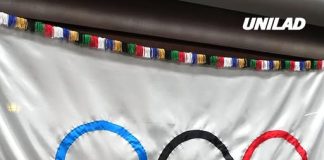Safety pins are ubiquitous tools, found in households, sewing kits, and emergency kits worldwide. While their primary function is well-known, a closer inspection reveals a small, often overlooked feature: a tiny hole near the clasp or hinge. This seemingly insignificant detail serves multiple purposes, enhancing the pin’s functionality and safety.
Structural Integrity and Manufacturing
The tiny hole in a safety pin plays a crucial role in its structural integrity. During manufacturing, this hole allows for precise alignment and assembly of the pin’s components. It ensures that the spring mechanism functions correctly, providing the necessary tension to keep the pin securely closed. Without this hole, the pin might not maintain its shape or could fail to close properly, compromising its safety.

Enhanced Safety Mechanism
Beyond manufacturing, the hole contributes to the pin’s safety features. It acts as a guide for the clasp, ensuring that the sharp point is securely tucked away when closed. This design minimizes the risk of accidental pricks or injuries, especially when the pin is used in clothing or baby diapers. The hole ensures that the pin locks into place, providing users with confidence in its reliability.
Versatility in Usage
The hole also adds to the versatility of the safety pin. Crafters and DIY enthusiasts often utilize this feature to attach decorative elements, such as beads or charms, transforming the humble safety pin into a piece of jewelry or art. Additionally, in emergency situations, the hole can be used to thread a string or cord, creating makeshift tools or fasteners. This adaptability showcases the pin’s utility beyond its conventional applications.
Historical Significance
The safety pin, patented in 1849 by Walter Hunt, has undergone various design improvements over the years. The inclusion of the tiny hole reflects the evolution of the pin’s design, emphasizing user safety and functionality. This small feature is a testament to thoughtful engineering, ensuring that the pin remains a reliable tool in various contexts.
A Design Rooted in Simplicity and Function
What makes the tiny hole in a safety pin so fascinating is how it embodies the essence of good design—small, intentional, and highly effective. It’s easy to take such a detail for granted, but when we break down how it improves both manufacturing and usability, its significance becomes clear. The hole supports precise alignment during assembly and allows for consistent tension in the spring coil, which is what enables the pin to snap shut and stay closed. Moreover, from a safety perspective, the hole helps ensure that the sharp point doesn’t slip out unexpectedly. This is especially important when safety pins are used on infants, in emergency kits, or in high-movement situations like during sports or outdoor activities.

Everyday Ingenuity
In everyday life, the hole can also be a convenient feature for creative solutions. Need a quick keychain holder? Loop a string through the hole. Making a charm bracelet? Attach tiny trinkets using the hole as a base. It’s these subtle yet powerful uses that transform the safety pin from a simple fastening tool to a mini multi-tool. Ultimately, the tiny hole is a brilliant example of engineering that enhances form and function—proof that sometimes, the smallest parts make the biggest difference.
Conclusion
While often overlooked, the tiny hole in a safety pin is a critical component that enhances its structural integrity, safety, and versatility. This small design element exemplifies how attention to detail can significantly improve a tool’s functionality and user experience. Next time you use a safety pin, take a moment to appreciate the ingenuity behind this modest yet essential feature.

















